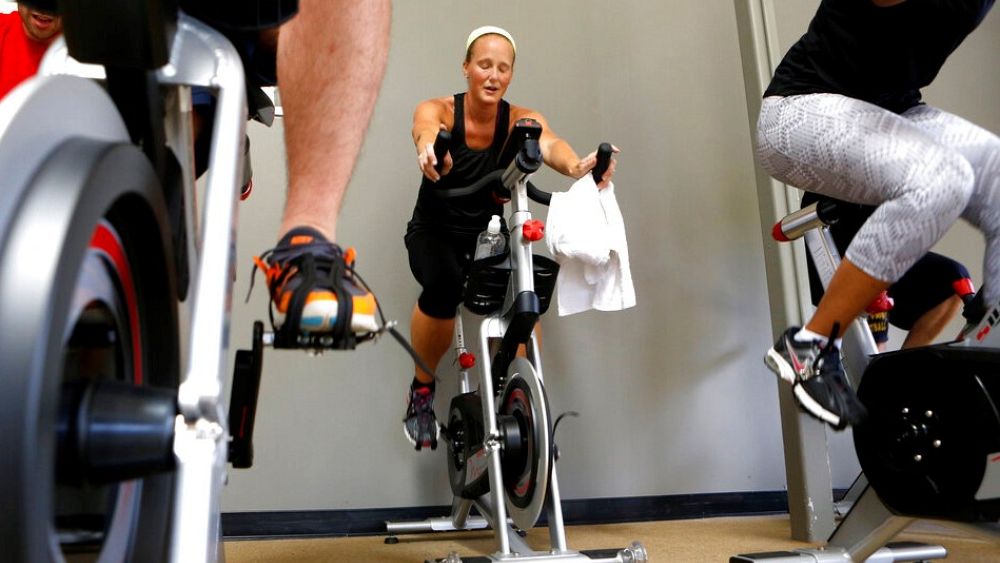
Exercise in Europe: Which countries do the most and least physical activity?

We all know that regular physical activity in the form of exercise or sports is essential for improving physical and mental health. Among other benefits, it supports cognitive functioning and well-being.
However, the prevalence of insufficient physical activity remains high in Europe. Almost half of EU residents (45 per cent) report that they never exercise or participate in sports.
A joint report by the World Health Organization (WHO) and the Organisation for Economic Co-operation and Development (OECD) suggests that increasing physical activity could prevent thousands of premature deaths in the EU and save billions of euros in healthcare spending annually.
But which countries are the most and least physically active in Europe? What are the main reasons preventing people from exercising more regularly? How do age, gender, and education impact exercise and sports participation? What is the economic burden of insufficient physical activity? And how has the COVID-19 pandemic affected people’s exercise routines?
The comprehensive Eurobarometer survey on sports participation and physical activity in the EU Member States and the joint WHO-OECD report titled ‘Step up! Tackling the burden of insufficient physical activity in Europe’ address all these questions.
In 2016, more than one in three (35.4 per cent) adults in the 27 EU Member States were insufficiently active, according to the WHO dataset. This varied from 19 per cent in Finland to 46 per cent in Portugal.
Insufficient physical activity was particularly prevalent in some southern European countries and less frequent in Nordic countries. The lowest rate was 18 per cent in Russia.
The Eurobarometer survey, conducted in April-May 2022, provides very fresh data on sports and physical activity in the EU.
When EU residents were asked how often they exercised or participated in sports, almost half (45 per cent) reported that they never did. Nearly one in five (17 per cent) said they seldom exercised or played sports.
Close to a third of the respondents (32 per cent) did so with some regularity, whereas only 6 per cent did so regularly.
Exercise means any form of physical activity that people do in a sporting context or sports-related setting, such as swimming, training in a sports centre or a sports club, or running in a park.
Portugal has the highest rate of those who ‘never’ exercise or play sports at 75 per cent.
The Nordic countries have the lowest values at just 8 per cent in Finland, followed by Sweden (12 per cent) and Denmark (20 per cent). This rate is 32 per cent in Germany and 45 per cent in France.
Female, older, less educated, or poorer? Less exercise
The survey reveals that gender, age, education, and economic status are related to exercise in the EU.
Women and older people are less likely to participate in regular sports or exercise, as well as people from lower socio-economic groups.
Men are more likely than women to exercise or play sports with some regularity: 40 per cent of them say they ‘never’ exercise or play sports, compared to 49 per cent of women.
People aged 15-24 years are the most likely to exercise or play sports with some regularity (54 per cent). This proportion decreases with age, down from 42 per cent among those aged 25-39 years to 32 per cent in the group aged 40-54 and 21 per cent among those aged 55 and over.
While 31 per cent of those who continued their education to the age of 20 or beyond reported they never exercised, this reached 74 per cent among those who left school at age 15 or earlier.
Motivators for exercise and sports participation
More than half of Europeans (54 per cent) say they engage in sports or physical activity to improve their health, far ahead of any other reason.
Around four in 10 engaged in sports or other physical activities to improve fitness (43 per cent) or to relax (39 per cent).
At least a quarter of respondents said that their motivation was to have fun (27 per cent), to improve physical performance (27 per cent), or to control their weight (25 per cent).
Why don’t Europeans exercise more?
Lack of time is by far the main factor preventing people across the EU from participating in sports more regularly.
While 41 per cent said they did not participate in sports more regularly due to not having time, a quarter (25 per cent) said that they lacked motivation or were not interested.
How did COVID affect the frequency of sports participation and exercise?
A third of respondents (34 per cent) said they continued to be physically active, including sports participation, but with less frequency, during COVID-19.
Nearly one in five (18 per cent) stopped being physically active during the pandemic.
A third of participants (34 per cent) said that they were physically active at the same level during COVID-19 as before.
The economic burden of insufficient physical activity
The OECD estimates that increasing physical activity can save purchasing power parity (PPP) of €7.7 billion per year in healthcare expenditures if everyone were to do at least 150 minutes of physical activity per week.
A large part of the burden occurs in countries with large populations and high healthcare expenditure levels, such as Germany (€2.1 billion), Italy (€1.3 billion), and France (€1.1 billion).
The WHO and OECD report found that if everyone were to meet the WHO’s recommended level of 150 minutes of moderate-intensity physical activity per week, it would:
• Prevent more than 10,000 premature (people aged 30 to 70 years) deaths per year.
• Increase the life expectancy of people who are now insufficiently active by 7.5 months and that of the total population by nearly 2 months.



